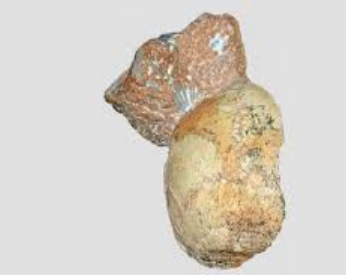- 阅读
- 阅读
- 技巧
- 百科
- 试题
- 文化
- 技能
A newly reinterpreted fossil muddies the waters of human history
一个最近被重新解释的化石搅乱了人类历史
Early human fossils are so rare that each new discovery may rewrite the textbooks.
早期人类化石非常稀有,每一个新发现都可能重写历史课本。
A chance find two years ago in Morocco, for example, pushed the origin of Homo sapiens back to at least 315,000 years ago,
例如,两年前在摩纳哥的一次偶然发现将智人的起源推回到至少31.5万年前,
from a previous minimum of 260,000 years based on remains found in South Africa.
此前基于南非残骸的发现,智人的起源是在26万年前。
Now, as they report in this week's Nature, a group of palaeontologists
现在,正如他们在本周《自然》期刊的报道,一群古生物学家
have extended the known geographical range of early Homo sapiens from Africa to Europe.
将已知早期智人的地理范围从非洲延伸至了欧洲。
Katerina Harvati of the University of Tuebingen, in Germany,
德国图宾根大学的卡捷琳娜·哈瓦蒂
and her colleagues found the relevant skull fragment not in the ground, but in a museum in Athens.
和她的同事是在雅典的一家博物馆,而非地下发现相关颅骨碎片的。

It was one of a pair of specimens dug up in the 1970s from Apidima, a cave in southern Greece.
这是20世纪70年代在希腊南部的一个洞穴Apidima中挖掘到的一对样本之一。
Both were recognised as being human fossils of some sort, but had not been dated or properly analysed.
两样都被认为是某种人类化石,但还没有确定年份或进行适当的分析。
Dr Harvati and her team have now done so, using techniques unavailable to the original finders.
哈瓦蒂和她的团队现在已经这样做了,他们使用了原始发现者们所不具备的技术。
One fossil is a reasonably complete, though fragmented, skull. Radioisotope dating shows it is 170,000 years old.
有一块化石是相当完整的头骨,虽然有裂痕。放射性同位素年份测定显示它有17万年的历史。
Computer reconstruction reveals it to be an example of Homo neanderthalensis,
计算机重建显示它属于尼安德特人,
Neanderthal man, a species widespread in Europe until 40,000 years ago, when Homo sapiens took over.
参与评论